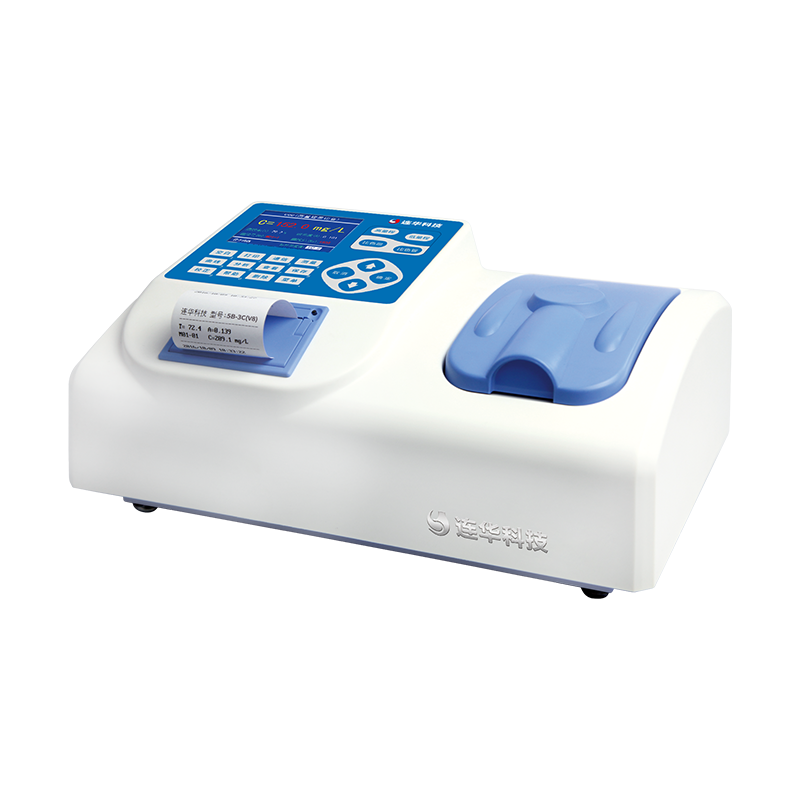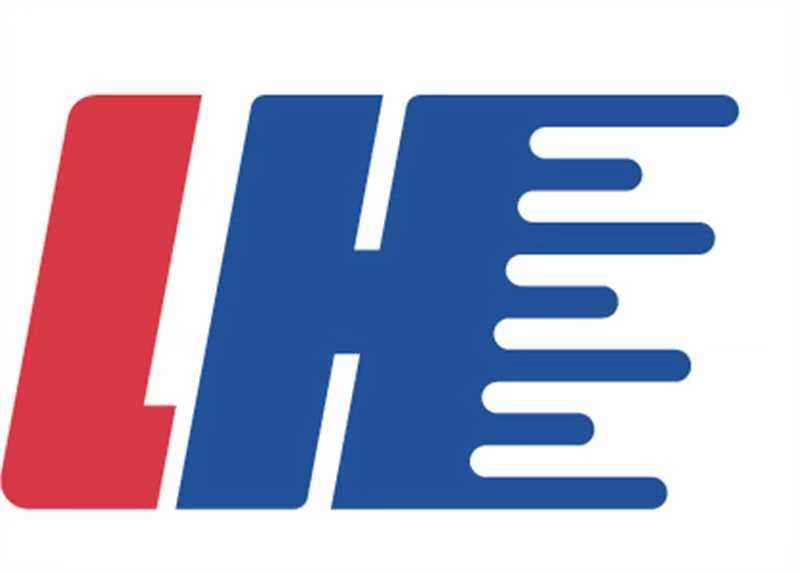Application of COD Rapid Analysis Instrument in Laboratory
The Need for Speed: Why Laboratories Are Adopting COD Rapid Testers

Increasing Pressure to Reduce Turnaround Time in Chemical Oxygen Demand (COD) Analysis
Old school COD analysis takes anywhere from 2 to 4 hours for each test, which just doesn't fit with how fast things move in today's labs anymore. According to some research published last year, around 7 out of 10 wastewater treatment plants are pushing for reports on the same day they run tests because regulations keep getting stricter all the time. The new rapid COD testers cut down testing time by about half to even three quarters thanks to better digestion processes and those fancy spectrophotometers. Labs can get through roughly triple the number of samples in a single workday when using these faster methods. What makes this possible? Well, basically it's swapping out those old open reflux setups for closed vessels instead. Less hands on work means fewer mistakes and results come back much quicker too.
Impact of Delayed COD Results on Process Control and Compliance
When chemical oxygen demand tests take too long, it really messes things up operationally. For industries running on tight schedules, just one delayed test can throw off entire discharge plans for about 8 to maybe even 12 hours straight. The Ponemon Institute reported these delays actually bump up yearly energy costs somewhere around $740,000. And let's not forget about fines either - those have gone way up since 2020, climbing by roughly 42%. Most plant managers we talk to say getting quicker COD readings isn't just nice to have anymore; it's basically required if they want to stay within regulations. That's where rapid testing solutions come in handy. These devices give usable results in under 15 minutes flat while still meeting all EPA standards. Plus, their measurements typically differ from standard methods by no more than 5%, which makes them pretty reliable alternatives.
Rise of Rapid Testing Methods in Modern Wastewater Laboratories
Adoption of rapid COD testing is accelerating across the industry, driven by measurable improvements in speed, cost, and compliance:
| Metric | Traditional Methods | Rapid COD Testers |
|---|---|---|
| Average testing time | 3.2 hours | 17 minutes |
| Annual reagent costs | $12k | $4k |
| Compliance violation rate | 14% | 3% |
Data sourced from the 2024 Water Analytics Report
This shift supports broader automation trends, with 42% of environmental labs now investing in portable COD testers featuring IoT connectivity for real-time monitoring. Standardized reagent kits and streamlined calibration protocols have also reduced technician training time by 65%, further enhancing adoption.
How COD Rapid Testers Work: Science and Technology Behind Fast Results
Chemical Oxygen Demand (COD) Measurement Principles Explained
Chemical Oxygen Demand (COD) testing basically tells us how much oxygen would be needed to break down all the organic stuff in water when it's treated with strong acids. Old school approaches take forever, often needing those long boiling processes that can drag on for anywhere between two to four hours. Newer equipment speeds things up dramatically though, using sealed containers heated to high temps where reactions happen in just a few minutes instead. After these reactions occur, technicians measure what happens next either through light absorption tests or by looking at electrical signals, giving pretty good readings about just how polluted the water really is with organic materials.
Fast Digestion Spectrophotometry: Core Technology in COD Rapid Tester Systems
Modern rapid testing equipment uses reactors that run around 150 to 165 degrees Celsius, which means samples get fully digested within just 10 to 20 minutes. That's about 80 percent quicker compared to those old school reflux methods most labs still use. The machines come with built-in spectrophotometers that check how much light gets absorbed at specific wavelengths like 600 nanometers when using dichromate based tests. These optical measurements then get converted into actual chemical oxygen demand numbers thanks to calibration curves already stored in the system. Labs can detect concentrations anywhere from 3 milligrams per liter all the way up to 1500 mg/L, but what really matters is how much faster this makes everything go compared to traditional approaches.
Role of Pre-Prepared Reagents and Colorimeters in Enhancing Precision
The sealed reagent vials come pre-filled with carefully mixed dichromate and sulfuric acid solutions. This setup cuts down on mistakes during manual preparation while also keeping workers safer from dangerous chemicals. The colorimeters used here have really good resolution too, able to spot those tiny color changes at about 0.001 absorbance units. Most people can't even see these minor differences with their eyes alone. According to some field testing results published by Water Quality Association back in 2023, operators using these automated systems saw much less variation between measurements compared to traditional methods. We're talking under 1.5% difference versus around 5 to 8% when doing things manually.
Calibration, Accuracy, and Reliability of Rapid COD Instruments
The instruments automatically calibrate themselves when they start up and after every tenth test, all while referencing those NIST traceable COD standards we've come to rely on. Independent research has shown these devices match up pretty well with the EPA Method 410.4 standards too, sitting somewhere between 92% and nearly 98% accurate. And if that wasn't good enough already, there's barely any variance at all - less than 3% actually - even after running thirty straight tests without a break. Labs that handle heavy workloads will appreciate the built in reminders for maintenance tasks and regular electrode cleaning cycles. These features really keep things running smoothly for facilities dealing with fifty plus samples each day, which is no small number considering how busy some of these places get.
Modern Features and Automation in COD Rapid Analysis Instruments
Automated COD Analyzers for High-Throughput Laboratory Environments
Labs can now handle around 40 to 60 samples each hour thanks to automated analyzers, which is roughly three times faster than what was possible with manual methods. The technology brings together robotic arms for sample movement and accurate heating components, cutting down on staff workload without compromising much on accuracy either (measurement differences stay below 2%). Some of the newer machines come equipped with smart features that actually change how long they heat samples depending on how cloudy or clear they look. This means these advanced systems can cut overall processing time nearly in half when compared to older fixed schedule approaches.
Advanced Sensor Systems and Real-Time Data Integration
Next-generation sensors deliver continuous COD monitoring with 0.5 mg/L resolution. When integrated with LIMS (Laboratory Information Management Systems), spectrophotometric results appear on dashboards within 15 seconds of completion. Field validation shows 98.7% correlation with traditional reflux methods when analyzing complex industrial effluents, ensuring reliability without sacrificing speed.
Streamlining Workflows with Pre-Prepared COD Vials and Reagents
Standardized reagent kits eliminate dilution errors and improve consistency, demonstrating 23% higher reproducibility in interlaboratory comparisons. Temperature-stable formulations extend shelf life to 18 months, cutting reagent waste by 40% in facilities conducting daily testing. Barcode tracking ensures full traceability from sample intake to final reporting, supporting audit readiness and quality control.
IoT and Cloud Connectivity: The Future of Smart COD Analysis in Labs
IoT-enabled analyzers offer intelligent features that enhance uptime and data usability:
| Feature | Impact |
|---|---|
| Remote calibration verification | 85% reduction in service calls |
| Predictive maintenance alerts | 92% analyzer uptime across 6-month trials |
| Cross-facility data benchmarking | 34% faster detection of regional contamination trends |
Cloud platforms securely archive results with blockchain-backed timestamps, meeting EPA’s 2025 requirements for tamper-proof, audit-ready water quality records.
Rapid vs. Traditional COD Analysis: Performance, Safety, and Efficiency
Time, Safety, and Resource Comparison Between Traditional and Rapid Methods
The old way of doing COD analysis takes anywhere from 2 to 4 hours with this whole reflux digestion process that needs dangerous stuff like potassium dichromate and mercury sulfate. Not only does this pose serious health risks, but it also creates a lot of toxic waste that has to be disposed of properly. Now comes the rapid testing method which works differently. These new testers come with sealed, ready-to-use reagents and use some kind of closed system spectrophotometry thingy that gives results in less than half an hour. The best part? Technicians don't get exposed to those cancer-causing chemicals anymore. According to a recent wastewater study published last year, these fast methods cut down on chemical waste by around three-quarters and save technicians about two-thirds of their hands-on time compared to traditional approaches.
| Parameter | Traditional Methods | Rapid Testers |
|---|---|---|
| Digestion Time | 2–4 hours | 10–30 minutes |
| Hazardous Chemicals | Dichromate, mercury | Non-toxic reagents |
| Technician Involvement | High (manual steps) | Low (automated analysis) |
| Waste Generation | 500–700 ml/sample | 50–100 ml/sample |
Optimizing Laboratory Wastewater Testing with Rapid Digestion Technology
Rapid digestion allows labs to handle 4–6 times more samples daily without compromising accuracy. Shorter heating cycles enable real-time identification of process deviations—critical for industries requiring immediate adjustments to effluent treatment. Municipal plants report 40% faster compliance reporting and 35% lower operating costs due to reduced reagent use and labor demands.
Validating Data Accuracy and Addressing Concerns About Analytical Rigor
Tests from independent sources show that when they're properly set up, rapid COD testing devices can match traditional methods about 95 to 98 percent of the time. Looking at data from a big 2024 lab comparison involving around 1,200 wastewater samples, the quick spectrophotometer tests kept their results pretty consistent too, with variation staying below 2 percent between repeats. That's actually comparable to what older reflux methods typically deliver. Regular checks and following those EPA guidelines for validation help make sure these tools pass all the necessary regulations for tracking industrial water discharges. Most facilities find this approach works well enough without compromising compliance requirements.
Real-World Impact: Case Studies of COD Rapid Tester Implementation
Municipal Lab Cuts Reporting Time by 60% Using a COD Rapid Tester
A municipal wastewater facility reduced its reporting delays by 60% after switching from titration to rapid spectrophotometric COD analysis. The faster turnaround enabled same-day compliance reporting and timely adjustments to treatment processes, preventing violations previously caused by delayed data. Staff redirected saved time toward preventive maintenance and process optimization.
Industrial Lab Integrates Advanced Rapid-Testing System with LIMS for Full Automation
A lab in the industrial sector managed to automate their entire workflow when they connected their fast COD testing equipment to the existing LIMS system. The automatic transfer of data basically got rid of those annoying transcription mistakes that used to happen so often. Reports became much more accurate as a result, and we actually saw about a third less waste of those expensive reagents. Money saved on labor too since staff didn't have to do all those boring repetitive tasks anymore. Pretty impressive considering the results still matched up really well with the EPA standards, showing around 98% agreement with the official reference methods they check against.
University Facility Boosts Student Throughput with Automated COD Analyzer
A university chemistry lab saw their student research output jump around 40 percent once they brought in an automated chemical oxygen demand analyzer. The new equipment takes care of all the messy digestion work and measurements automatically, so undergrads spend less time struggling with sample preparation and more time actually thinking about what the data means. On busy days when everyone wants tests done, the lab can handle up to 120 samples without breaking a sweat. The results still match pretty closely with old school reflux methods too, within about 5% give or take according to some controlled experiments we ran last semester. Pretty impressive for something that wasn't even supposed to be part of our budget until grant money came through.

